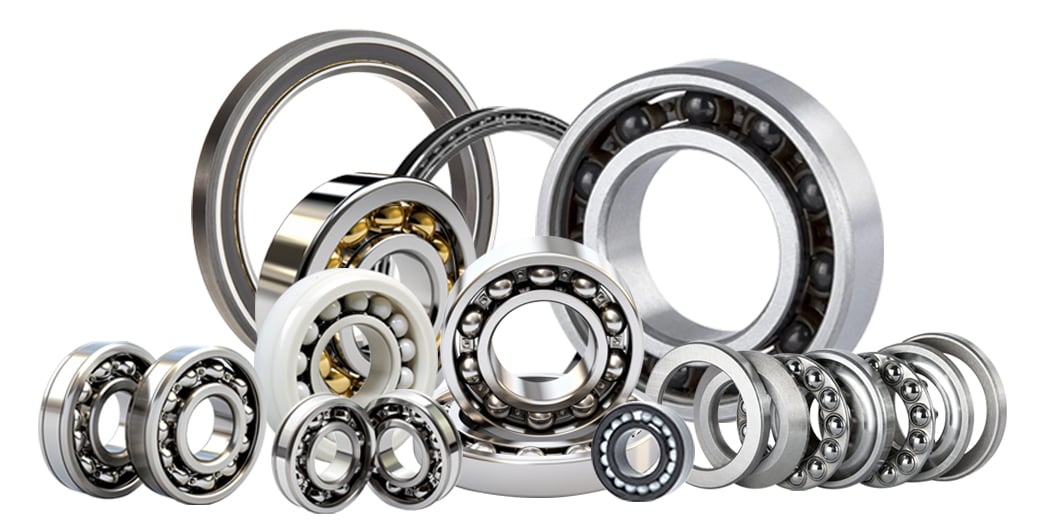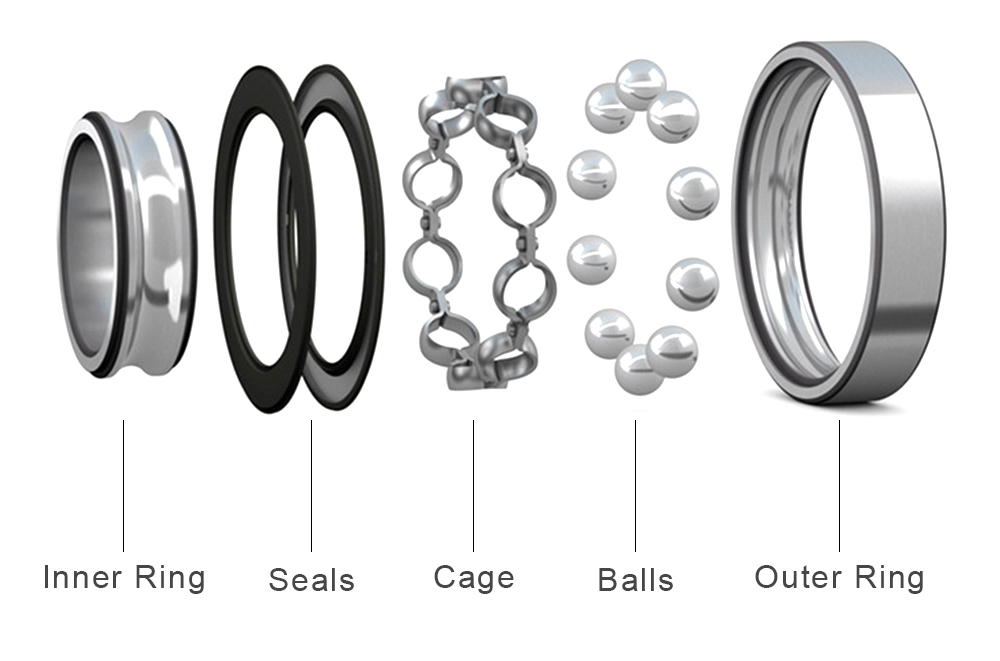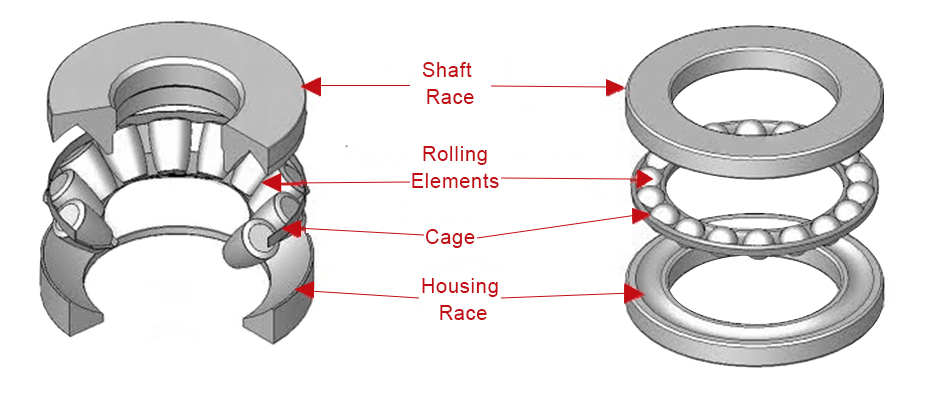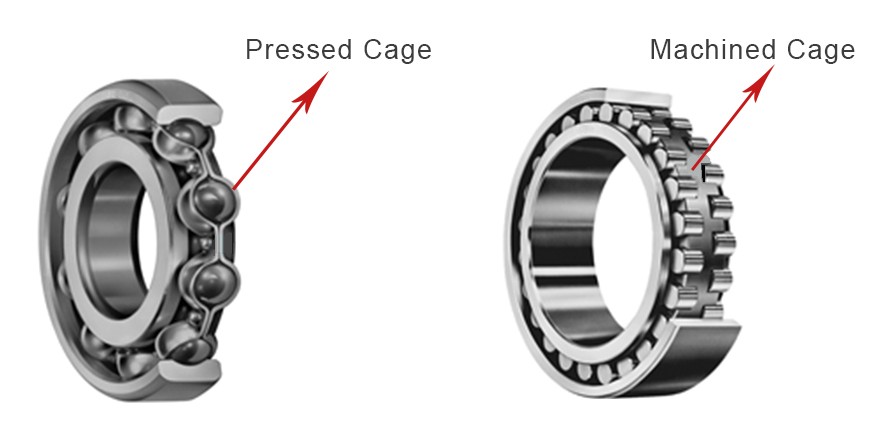How Do Bearings Work?
CONTENTS
- What are Bearings and Their Functions?
- Components and Construction
- Mechanics Behind Bearing Operation
- Bearing Rings Vs Races
- The Role of Rolling Elements
- Ensuring Controlled Movement: The Cage
- Integrating Components for Seamless Rotation
- Enhancing Durability and Stability with Lubricants
- Culmination of Components: A Cohesive Function
In the vast world of machinery, ever pondered the question, "how do bearings work?" These unassuming devices play a monumental role in numerous machines. Tasked with reducing friction and enabling smooth operations, industrial bearings are indispensable to countless applications.

Fig 1 Types of Bearings
What are Bearings and Their Functions?
Bearings are mechanical components that reduce friction between moving parts, guiding them in either rotational or linear movement. They're pivotal for efficient machine operation. In rotation, as seen in car wheels or fans, they allow parts to spin around an axis. In linear movement, like machinery or drawer slides, they permit straight-line motion. By minimizing direct contact, they ensure smooth operation and prolong component lifespan.
Components and Construction
Bearings consist of intricately designed elements that work in harmony to minimize friction and enable movement. Here are the primary components:
- Bearing rings/races: The ring-shaped components
- Rolling Elements: Components which roll between the bearing rings (races); They can be either "balls" or "rollers".
- Cage/Retainer: This maintains spacing between the rolling elements, ensuring they don't collide, which would increase friction.
When a load is applied, it’s transferred from the inner ring, through the rolling elements, to the outer ring, facilitating smooth rotation or movement with minimal resistance.
Mechanics Behind Bearing Operation
Bearings function on the principles of load distribution and dynamics. Key aspects of their operation include:
Load Distribution
Bearings distribute load across multiple rolling elements, preventing single-point contact, which would escalate wear and friction. This distribution ensures smooth rotation by reducing contact between moving parts.
Shape of Rolling Elements
- Balls: These have point contact with the bearing rings and are versatile, handling both radial and Axial loads.
- Rollers: With a line contact, they offer a broader surface for distributing load, suitable for heavier applications.
- Arrangement: The positioning of these elements, whether angular or linear, dictates the bearing's ability to manage specific load directions, either combined or solely radial/thrust.
In essence, bearings meld load distribution principles with strategic design and placement of rolling elements to reduce friction and wear effectively.
Bearing Rings Vs Races
Bearing Rings
Bearing rings, including inner and outer rings, are commonly used for radial bearings.
- Inner Ring: The bearing ring on the inside, into which the shaft is inserted
- Outer Ring: The ring on the outside and is inserted into the housing. ("Housing" pertains to the elements that engage with the outer ring during the bearing's insertion.)
Radial bearings handle loads perpendicular to the shaft's axis. The rings in radial bearings , like thin section bearings, deep groove ball bearings, are typically designed to accommodate these loads with the bearing's entire width.

Fig 2 Structure of a Sealed Radial Ball Bearing
Bearing Races
Bearing races, including shaft races and housing races, are used for thrust bearings , including thrust ball bearings and thrust roller bearings.
- Shaft race: L ocated on the inner side of the bearing and is directly in contact with the shaft. Its primary role is to transmit axial loads, from the shaft to the rolling elements. It is designed to handle forces primarily in the axial direction.
- Housing race: Located on the outer side of the bearing and fits into the machine's housing. This component takes on the axial loads from the rolling elements and disperses them into the housing. It is designed to resist deformation and to maintain accurate positioning, ensuring the bearing's stable performance.
Both races are engineered to work in harmony, enabling the rolling elements to move smoothly while handling axial loads efficiently.

fig 3 Structure of Thrust Bearings
The Role of Rolling Elements
Rolling elements, pivotal to bearings, determine their efficiency and functionality. Their primary goal is to diminish friction and guarantee consistent motion. Let's delve into these vital components.
Balls
These spherical elements offer point contact with bearing races. Suitable for both radial and thrust loads, they're ideal for lighter applications due to their minimal contact area.
Rollers
Contrasting balls, rollers provide a line contact, making them adept for heavier radial loads. Varieties include:
- Cylindrical Rollers: Suited for heavy radial loads because of their larger contact area.
- Tapered Rollers: Their unique shape enables them to manage both radial and axial loads.
- Needle Rollers: Slender and ideal for spaces with radial constraints but demanding high load capacity.
The choice of rolling elements depends on specific application requirements, such as load type, operation speed, and environmental conditions. While ball bearings excel in high-speed, low-load scenarios, roller bearings, such as needle, cylindrical, tapered and spherical roller bearings, are tailored for high-load, low-speed operations.
Ensuring Controlled Movement: The Cage
The cage/ retainer is a pivotal component in a bearing's anatomy, ensuring the efficient operation of the bearing. Its primary role is to maintain consistent spacing between the rolling elements, preventing potential clashes that could lead to increased friction and reduced bearing life.
Cages come in varied designs, each tailored to specific bearing demands:
- Pressed Cages: Generally used in lower-cost, lower-load, and higher-speed applications. Pressed cages are lighter but are generally not as strong as machined cages.
- Machined Cages: More commonly used in higher-load and lower-speed applications. They are robust and durable but are generally heavier and more expensive.
The choice between pressed and machined cages depends on specific load, speed, and performance requirements.

Fig 4 Pressed Cage Vs Machined Cage
Integrating Components for Seamless Rotation
The efficiency of bearings hinges on the synchronized interplay of its core components: bearing rings, rolling elements, and cages. The rings provide the pathway, the rolling elements bear the load and ensure smooth rotation, while the cages keep these elements equidistant. Together, their combined action ensures optimal friction reduction and facilitates fluid, seamless rotation in various machinery applications.
Enhancing Durability and Stability with Lubricants
Lubricants are the unsung heroes when considering how bearings work efficiently. By reducing friction and protecting against wear and tear, bearing lubricants, whether grease or oil, play a vital role in bearing performance.
Lubricants, beyond reducing friction, play a pivotal role in heat dissipation within bearings. As bearings operate, they generate heat; lubricants assist in drawing this heat away, maintaining optimal operating temperatures. Efficient lubrication not only protects the bearing components from premature wear but also significantly extends the service life of the bearing, ensuring stability and consistent performance over extended periods.
Culmination of Components: A Cohesive Function
Bearings represent a harmonious interplay of elements, each crucial for stable and efficient rotation. The synergy of bearing rings, rolling elements, and cages ensures precise and uninterrupted movement. Complementing this, lubricants further refine the process, ensuring smoothness and reducing wear. Together, these components and substances epitomize the essence of optimal bearing operation.
Conclusion: Paving the Way for Constant Rotation
So, how do bearings work? Through the synchronized efforts of bearing rings, rolling elements, cages, and lubricants, they ensure continuous, stable, and smooth rotations in machines. Their legacy in engineering is a testament to their unparalleled importance.
Keep Learning








